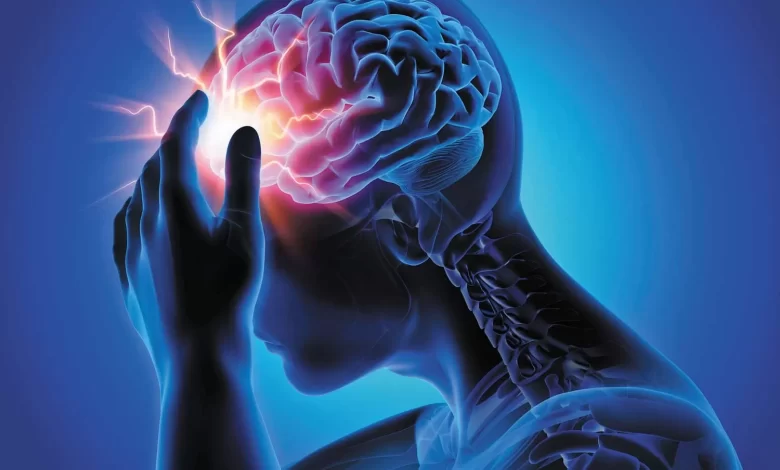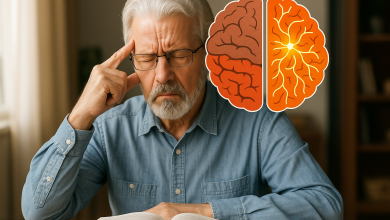The Future of Brain Injury Treatment: What Experts Predict for 2030

As we forge into the next decade, Brain Injury Treatment stands at the forefront of medical innovation. With advancements driven by neurotechnology, artificial intelligence (AI), regenerative medicine, and minimally invasive therapies, experts believe transformative breakthroughs will reshape recovery pathways for traumatic and acquired brain injuries. By 2030, the landscape of treatment is set to be redefined — let’s explore the future in detail.
1. Precision Diagnosis & Personalized Care
Biomarker Testing for Field Triage
Rapid diagnostics capable of detecting brain injury biomarkers in minutes are emerging. Military and civilian responders are trialing quick blood-based tests to identify mild traumatic brain injuries (mTBIs) on-site.
Such tools promise quicker triage and tailored early interventions, cutting hospital transfers and unnecessary CT scans.
Advanced Neuroimaging + AI
By 2030, neuroimaging will be enhanced through AI that detects micro-bleeds and subtle damage patterns with high precision. Neural network models already predict in-hospital mortality with ~95% accuracy.
These AI tools will combine imaging, EEG, and clinical data to forecast outcomes and personalize treatment plans—shifting brain injury care from a reactive to predictive model.
Standardized Diagnostic Frameworks
New diagnostic criteria, like UCSF’s emerging TBI severity models, will standardize care protocols across trauma centers. Such frameworks are expected to reduce premature withdrawal of life support, ensuring patients receive necessary acute and rehabilitation care.
2. Regenerative Medicine & Neuroplasticity
Hyperbaric Oxygen Therapy (HBOT)
Hyperbaric oxygen therapy is gaining validation for its ability to stimulate neuroplasticity post-injury. The Sagol Center has demonstrated cognitive and functional improvements even years after TBIs.
By 2030, HBOT could become a routine adjunctive treatment, with integrated protocols spanning acute and long-term rehab.
Stem Cells & Neuroengineering
Ongoing research in stem-cell–based therapies aims to regenerate damaged neural tissue. Techniques combining magnetic nanoparticles and nerve growth factors show early promise in guiding neural repair.
When coupled with neurostimulation or BCI-enabled stimuli, these strategies are expected to significantly accelerate cognitive and motor recovery.
Chronic-Condition Model
Leading experts, including C. Y. Corrigan, are re-framing brain injuries as chronic, dynamic conditions—akin to chronic pain—rather than fixed damage.
That shift drives continuous, adaptive rehabilitation—emphasizing neural plasticity rather than passive recovery—to sustain progress long-term.
3. Advanced Neuromodulation & Brain–Computer Interfaces (BCIs)
Scalable BCIs for Motor Rehabilitation
By 2030, BCIs will likely transition from lab settings to real-world use, aiding stroke survivors and paralyzed patients. Notably, invasive systems like the robot-walking exoskeleton controlled solely by brain signals with bilateral sensory feedback were demonstrated as recently as April 2025.
Minimally invasive BCIs—with sub-millimeter surgical openings—are set to offer similar benefits with reduced risks.
Closed-Loop Neurostimulation
Next-gen implants will not just record but actively regulate brain activity. Devices like NeuroPace’s Picostim implant have demonstrated 80% seizure reduction in epilepsy.
Future BCI therapeutics will adapt stimulation in real time, targeting movement, cognition, even psychiatric disorders—facilitating restoration of lost functions via AI-guided neuromodulation.
Vagus Nerve Stimulation & Beyond
Vagus nerve stimulation is already compressing months of physical therapy into weeks for stroke patients. By 2030, such neuromodulation methods will integrate seamlessly with AI-driven BCIs and wearable sensors, offering comprehensive rehab protocols ready for home use.
4. Nanotech & Targeted Drug Delivery
Nanobots at Work
Research at the University of Edinburgh shows magnet-guided nanorobots that can precisely deliver clotting drugs to aneurysm sites, potentially minimizing invasive procedures.
By 2030, similar nanotech approaches may deliver neuroprotective agents to injury sites, reducing cell death and inflammation.
Remote Ischemic Conditioning (RIC)
RIC—applying controlled limb ischemia—triggers systemic neuroprotective effects. Its low cost, simplicity, and potential impact on stroke and TBI outcomes make RIC a promising adjunct to acute care by 2030.
5. Rehabilitation Innovations: Robotics, AI & Home-Based Recovery
Robotic-Assisted Therapy
Robotics are playing increasing roles in neurology—providing precision, consistency, and repeatability in motor rehabilitation.
Robotic exoskeletons controlled by neural signals (via BCI) will become more affordable and portable, extending advanced rehab beyond labs into homes.
AI-Powered Rehab Games
Dr. Chet Moritz and colleagues are developing “NeuroGame Therapy,” using EMG-driven video games to boost neuroplasticity in stroke and CP patients. Games like these, paired with AI-learned adaptations, will transform home-based cognitive and motor retraining.
Teletherapy & Remote Monitoring
An integrated wearable-plus-cloud platform will track biomarkers, adherence, and progress for real-time therapist adjustments. This remote rehab ecosystem will ensure data-driven personalization and improved outcomes.
6. Market Growth & Access to Care
Explosive Industry Expansion
The global traumatic brain injury treatment market is projected to climb from ~$2.5 bn in 2024 to ~$4.7 bn by 2033, with a ~7% annual growth rate.
Drivers include rising TBI incidence, innovative diagnostic and therapeutic products, and incorporation of personalized rehab.
Regional Disparities & “Second Wave” Market
North America remains the dominant market, but Asia-Pacific—bolstered by public health investments and TBI prevention initiatives—is poised for fastest growth.
By 2030, non-Western markets will see increased access to advanced TBI technologies as costs fall and local partnerships drive commercialization.
7. Ethical & Policy Implications
Privacy & Neurodata Rights
BCIs inherently collect brain activity—raising concerns about neural privacy. Europe’s AI Act classifies neuro-biometric tech as high-risk, while U.S. programs like BRAIN 2.0 advocate transparency and open standards.
2030 policy frameworks will likely implement strict consent, secure brain data storage, and individual neurodata ownership.
Equity & Global Access
Advanced treatments risk being limited to wealthy nations and private clinics. Bridging the access gap will necessitate public funding, open-source platforms, and global training programs, especially for low- and middle-income countries.
Regulatory Complexity
Emerging therapies—like AI-driven implants, nanobots, and novel biomaterials—require robust regulatory pathways. As innovation outpaces conventional frameworks, new cross-discipline review boards and international coordination will be essential.
8. Looking Ahead: What’s Coming by 2030?
| Innovation Area | Key 2030 Milestones |
| Diagnostics | Widespread use of rapid biomarker tests and AI-driven triage tools in ambulances and sports fields. |
| Neurorehab | Broad adoption of HBOT protocols combined with AI-guided robotics and gamified therapy at home. |
| BCIs & Implants | Commercial availability of minimally invasive, closed-loop implants for motor and cognitive rehab. |
| Nanotech / RIC | Clinical trials transitioning nanoscale delivery systems from animal models to human testing. |
| Equity & Policy | Global rollout of public-funded access schemes and regulatory standards for neurotech privacy. |
Challenges to Address
- Technical Barriers – Ensuring implant safety and long-term stability.
- Ethical Risks – Preventing misuse of neural data or augmentation tech.
- Data Integration – Seamless interoperability across diagnostics, rehab, and monitoring platforms.
- Cost & Access – Bridging affordability gaps across socio-economic and geographic divides.
Conclusion
By 2030, Brain Injury Treatment will be transformed by converging innovations: AI-enhanced diagnostics, proactive neurorehabilitation, regenerative therapies, neuromodulation, and precision neurotechnologies. The evolving view of TBIs as chronic, treatable conditions emphasizes neural repair and lifelong recovery. Yet, achieving this vision depends on addressing ethical considerations, regulatory hurdles, and ensuring equitable access globally.
For patients and clinicians alike, the future promises radical hope — a world where brain injuries no longer spell permanent disability, but the starting point for a journey toward recovery, functional restoration, and renewed independence.




